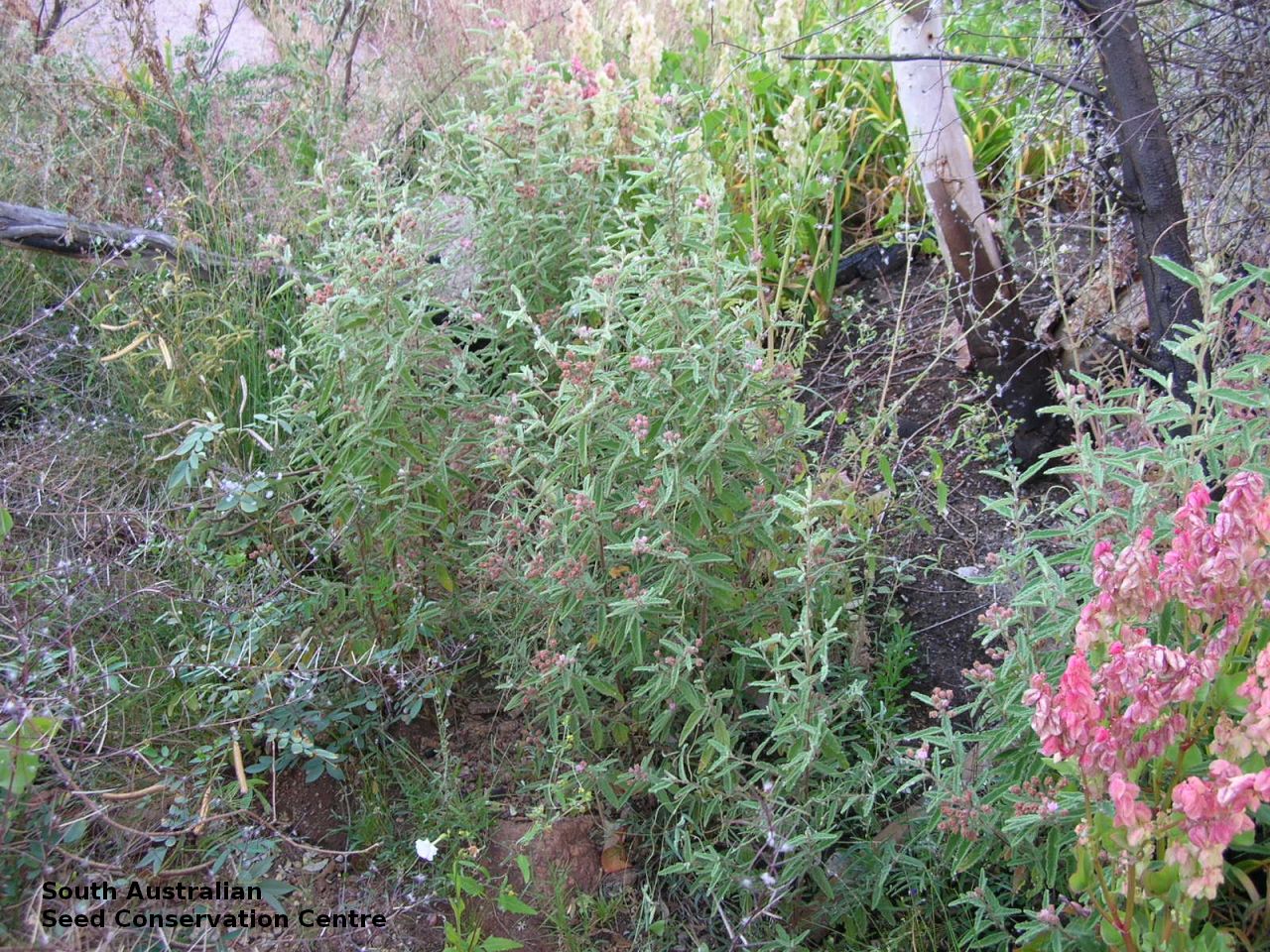
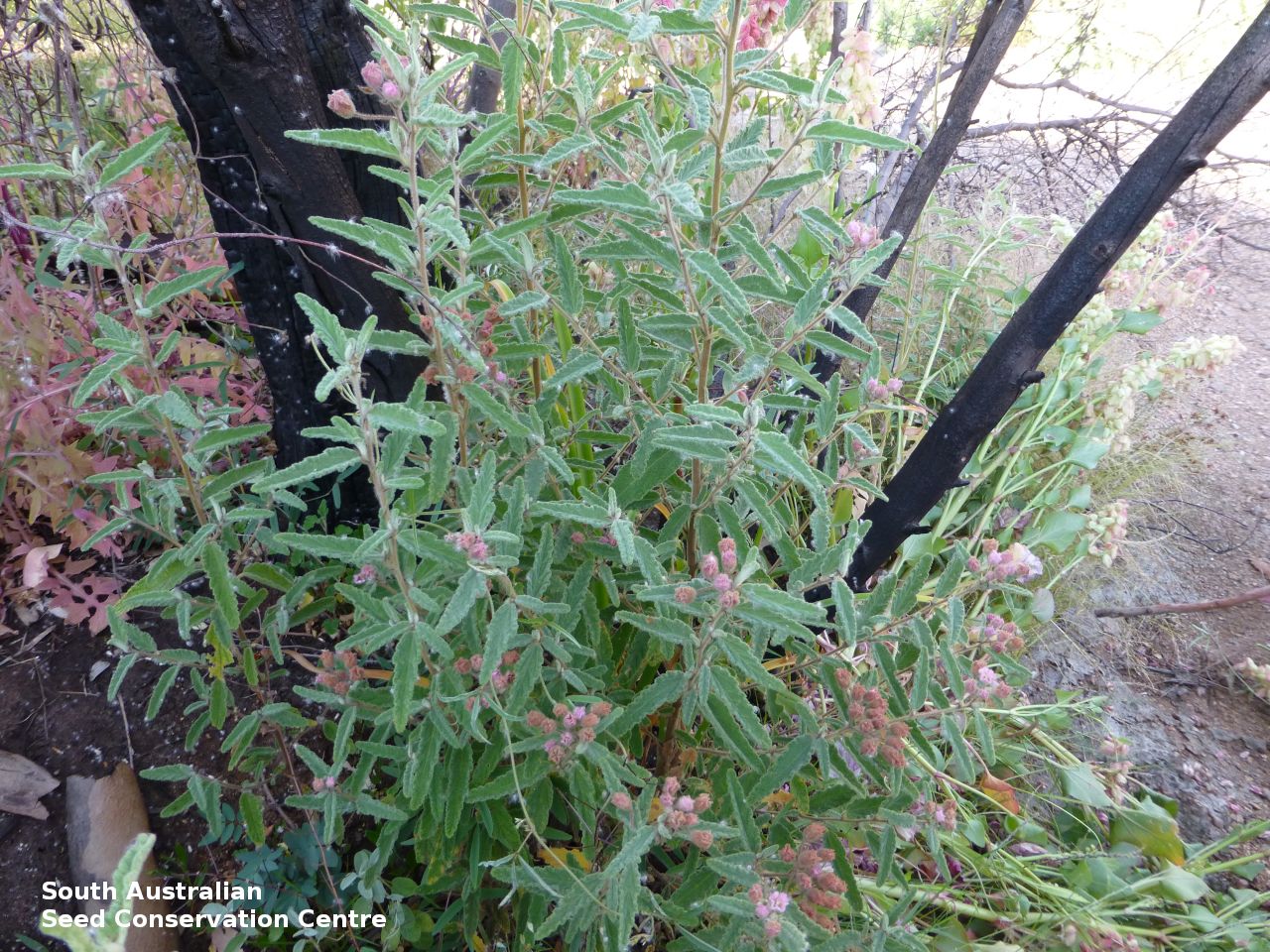
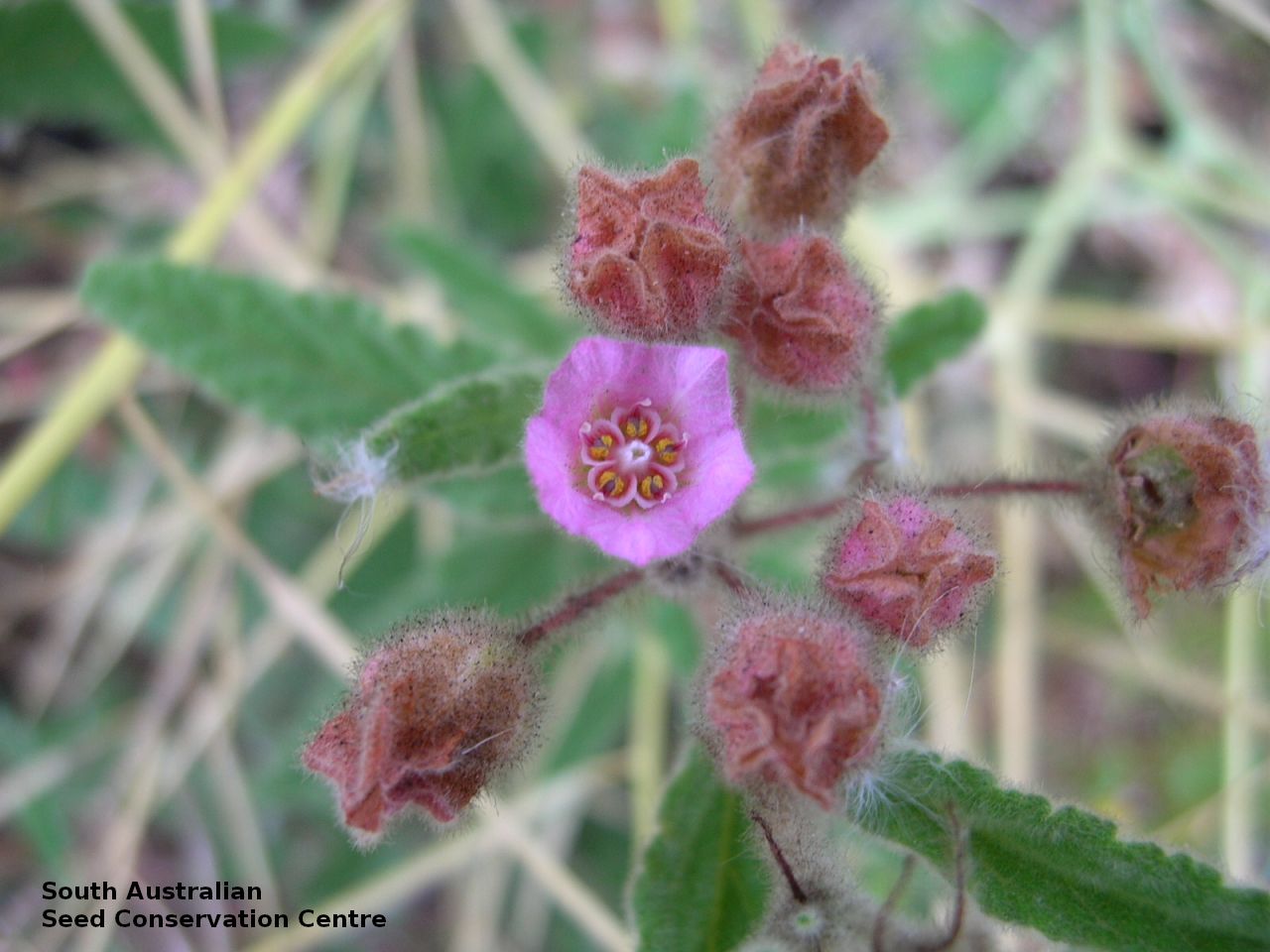
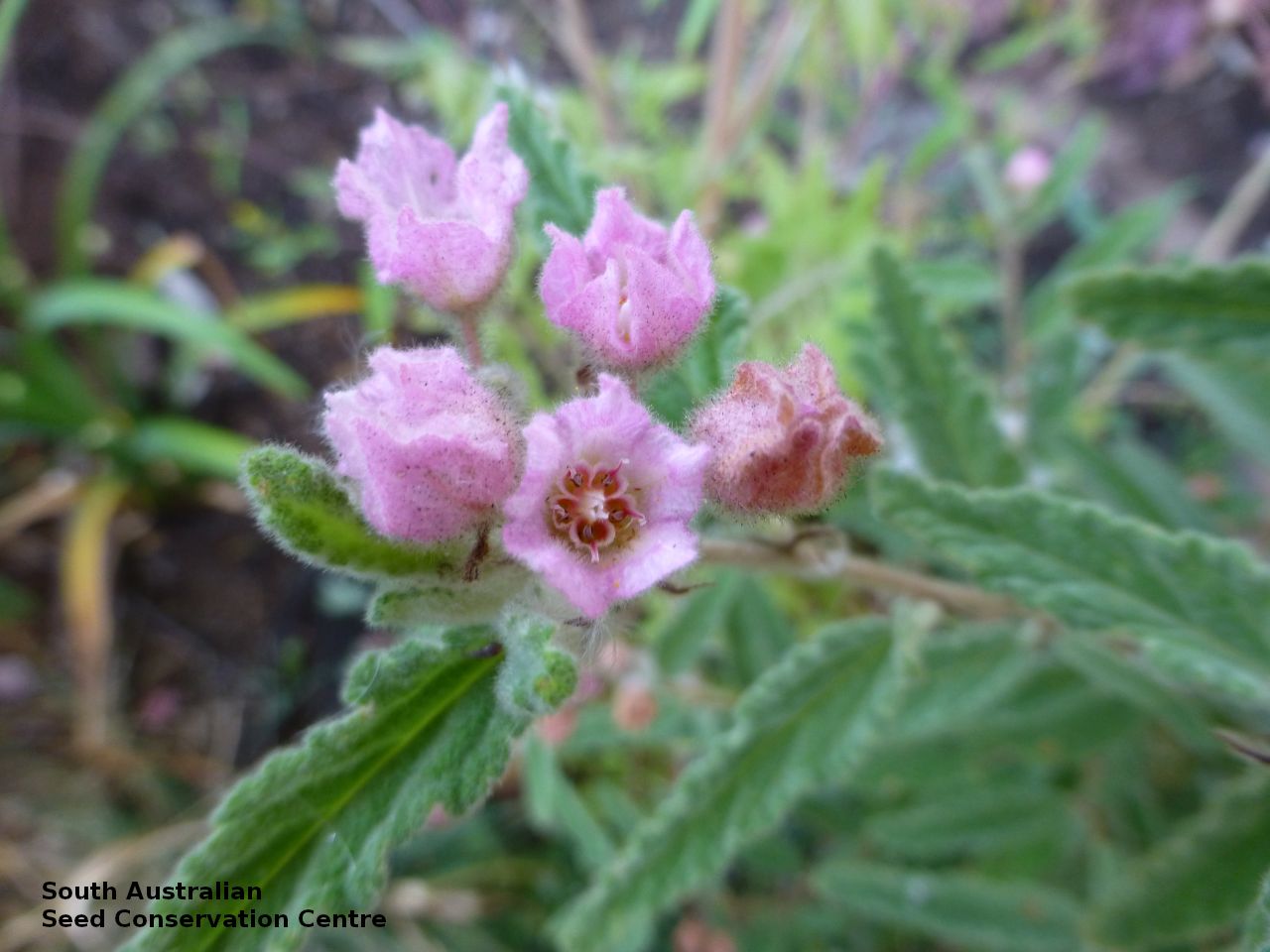
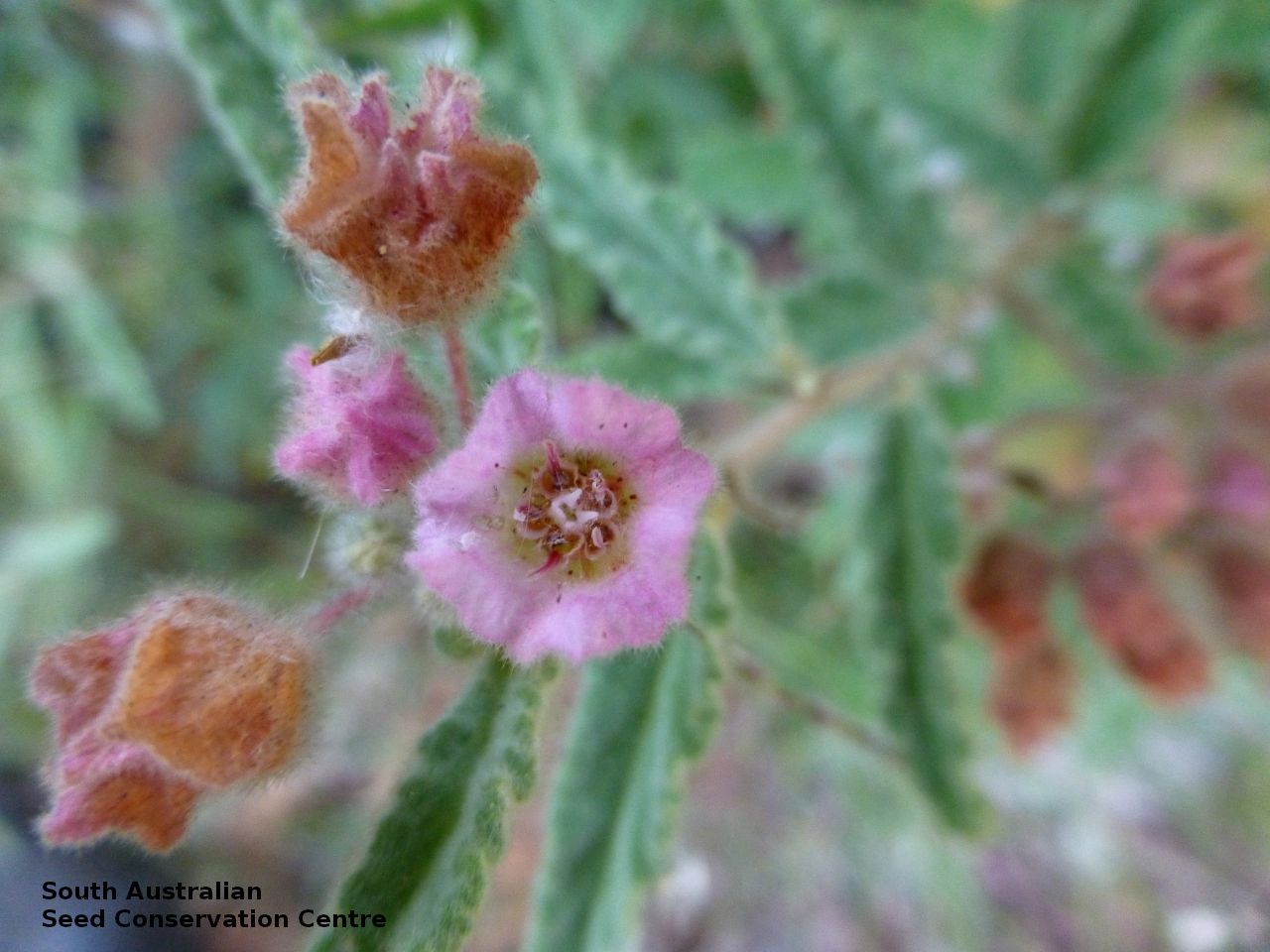
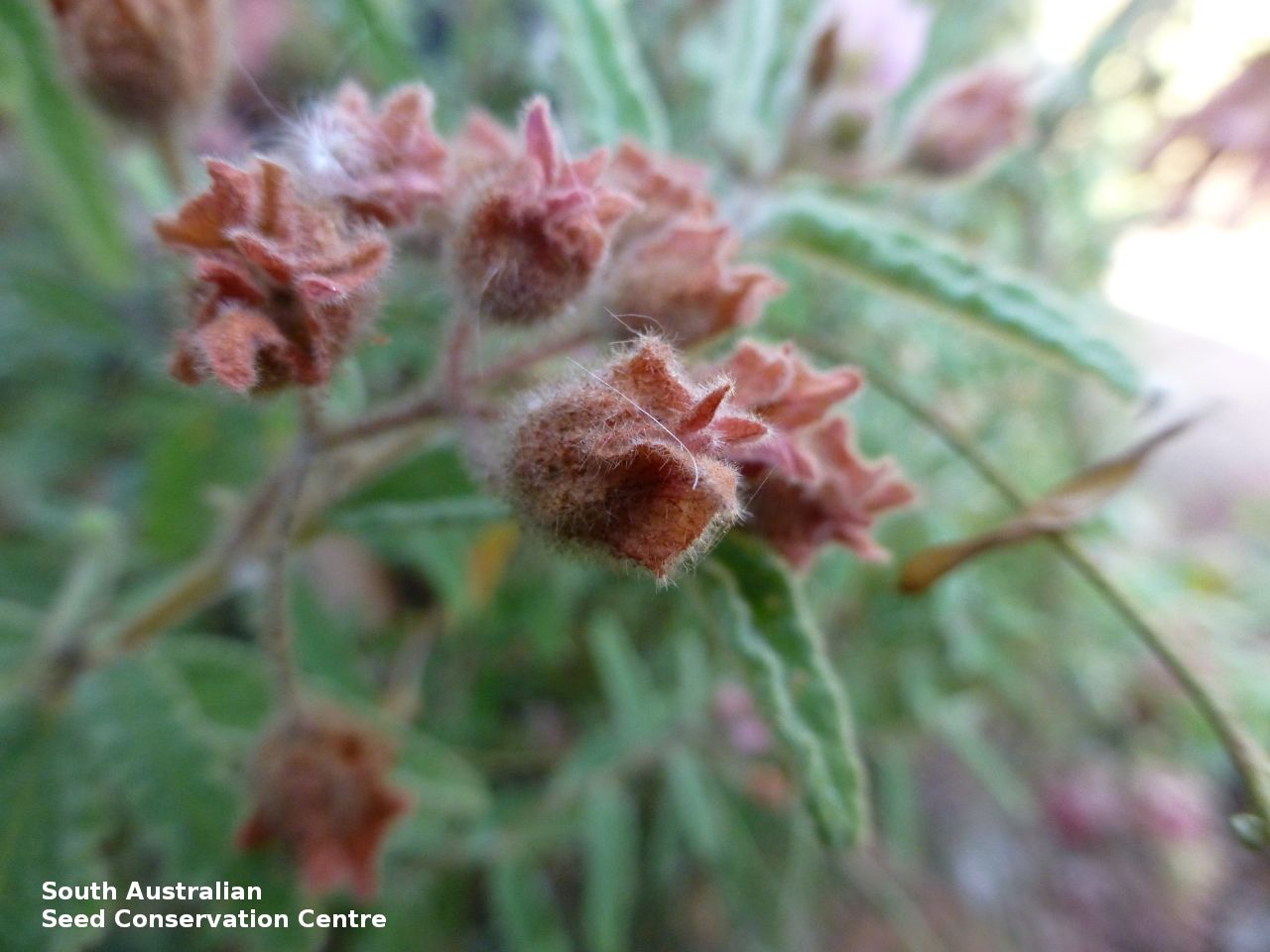
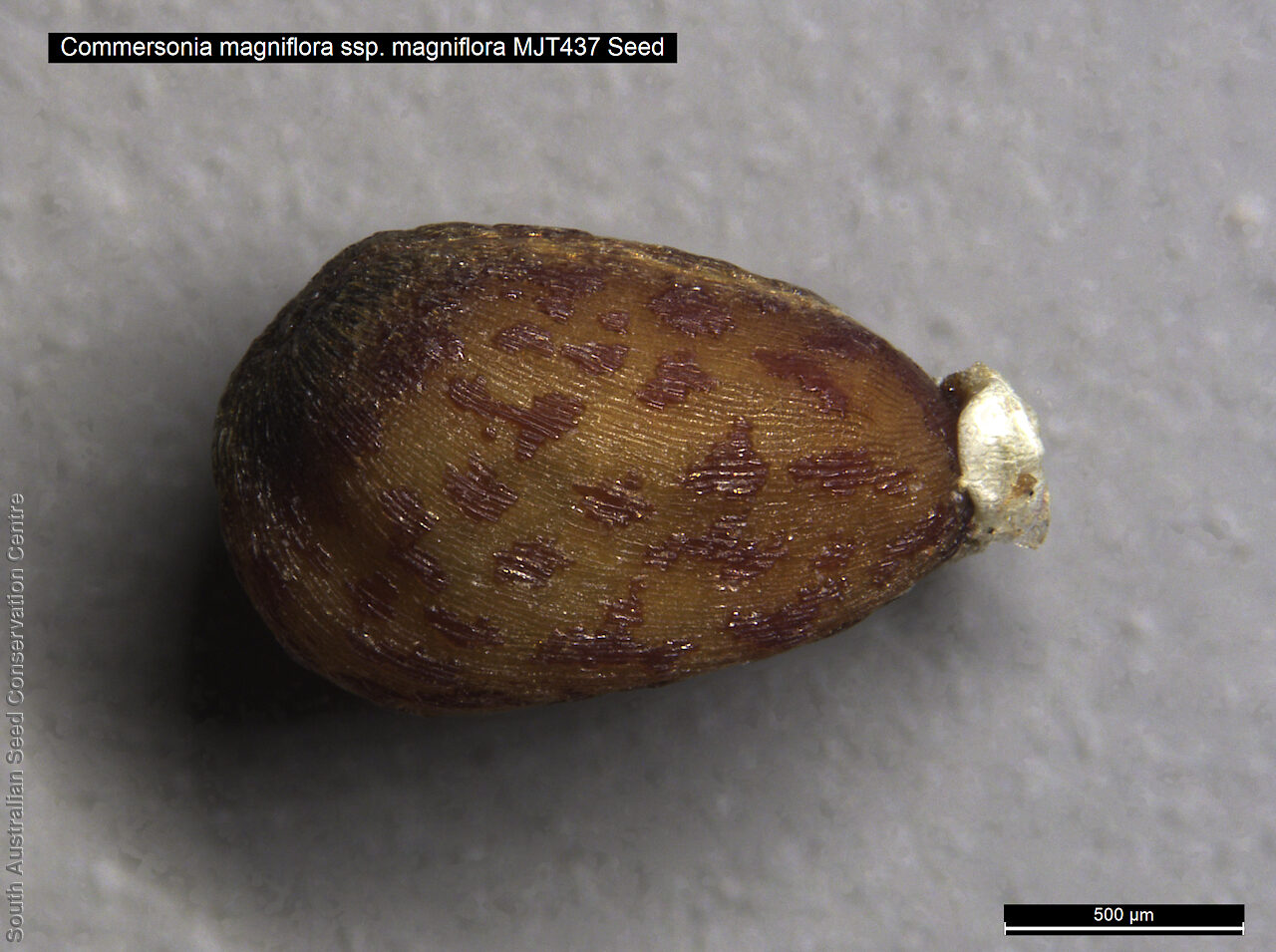
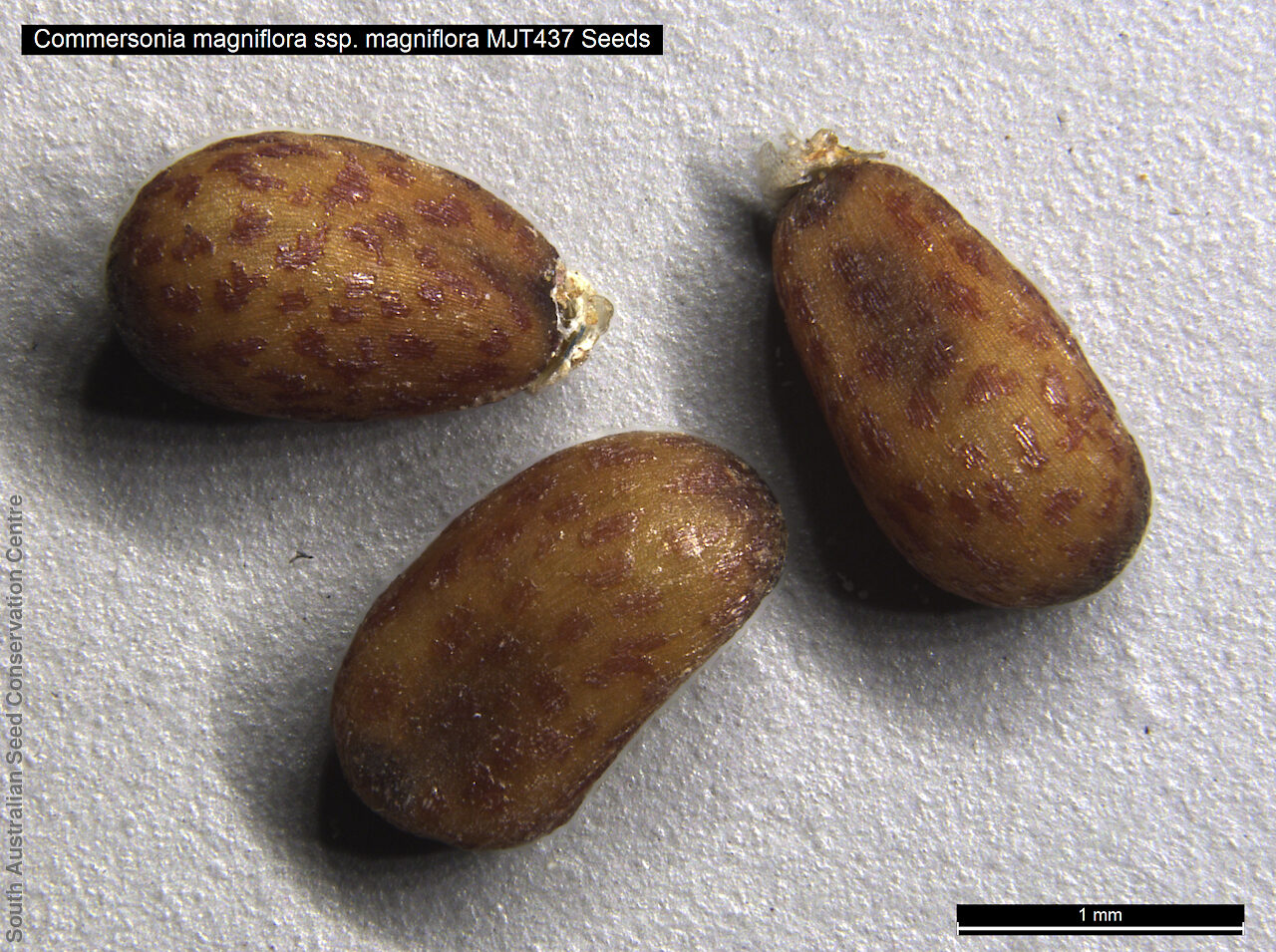


Botanical art
Prior names
Rulingia magniflora
Etymology
Commersonia named after Philibert Commerson (1727-1773), a French naturalist best known for accompanying Louis Antoine de Bougainville on his voyage of circumnavigation in 1766�1769. Magniflora from the Latin 'magnus' meaning large and 'floris' meaning flower; referring to the species large flowers.
Distribution and status
Found in the north-western corner of South Australia. Also found in the Northern Territory. Native. Rare in South Australia. More common post fire. Uncommon in the Northern Territory.
Herbarium region: North Western
NRM region: Alinytjara Wilurara
AVH map: SA distribution map (external link)
Plant description
Shrubs 2 m high with branches covered in velvety hairs. Leaves oblong-lanceolate, crenate or serrate, with impressed midrib and secondary and often tertiary veins, with flat margins, velvety hairs especially on the paler undersurface, to 60 mm long and 20 mm wide. Inflorescence on peduncles with up to 10 pink flowers. Flowering between August and September. Fruits are hairy brown globular capsule to 6 mm diameter, splitting when matured and contain numerous seeds. Seeds are brown ovoid seed to 2 mm long and 1 mm wide, with fine striation and scattered black dots on the surface. Seed embryo type is spathulate.
Seed collection and propagation
Collect seeds between September and December. Capsules can be collected prior to splitting as long as the seeds inside are hard and brown. Place the capsules in a tray and leave to dry for at least a week. Rub the dried capsules by hand to dislodge the seeds. Use a sieve to separate the unwanted material. Store the seeds with a dessicant such as dried silica beads or dry rice in an air tight container in a cool and dry place.